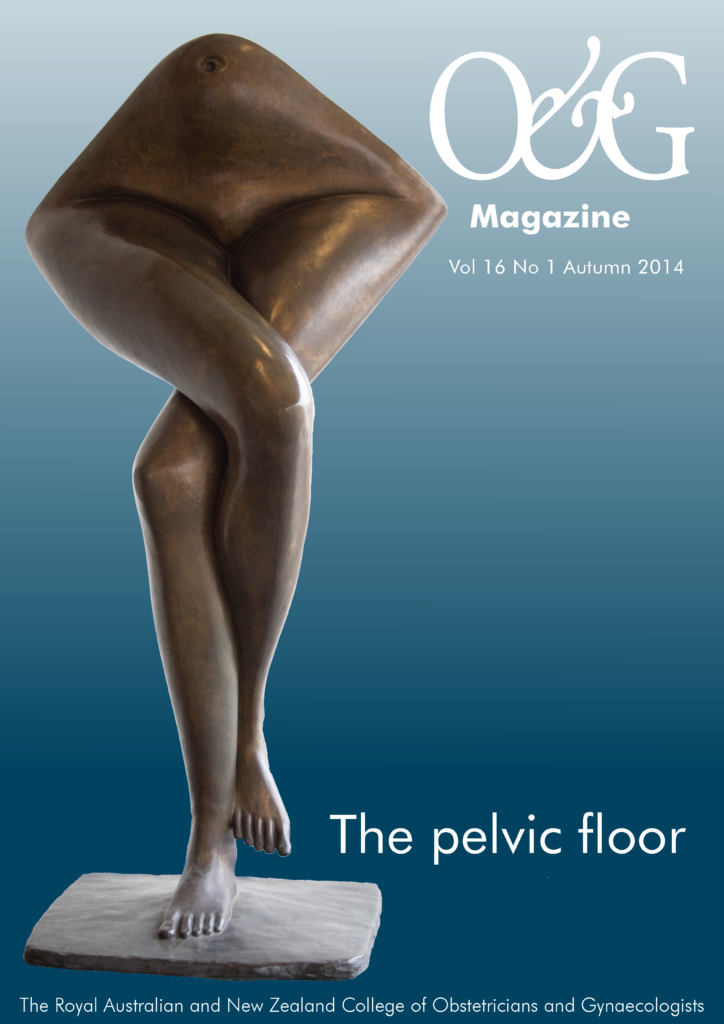Q&a attempts to provide balanced answers to those curly-yet-common questions in obstetrics and gynaecology for the broader O&G Magazine readership, including Diplomates, Trainees, medical students and other health professionals.
Q
Deborah is 40 years of age and is delighted to be pregnant for the first time. Conception was by artificial insemination using donor sperm. Apart from an increased BMI, her general health is good. She is now ten weeks’ gestation and is seeking information about noninvasive prenatal testing. What will you tell her?
a
Noninvasive prenatal testing NIPT) uses advanced molecular genomic technologies to detect fragments of cell-free DNA (cfDNA) in maternal blood. cfDNA includes both maternal and fetal components; the primary source of fetal cfDNA is the placenta. NIPT has been shown to be highly sensitive and specific for the major autosomal trisomies (21, 18 and 13). NIPT can also accurately predict fetal gender and provide information about sex chromosome abnormalities such as Turner syndrome (XO), Klinefelter syndrome (XXY) and triple X syndrome (XXX).1
Traditional combined first trimester screening (cFTS) detects approximately 90 per cent of pregnancies affected by trisomy 21, for a five per cent false-positive rate. In Deborah’s case, her age would increase the likelihood of a high-risk result.2 Several studies have now shown that NIPT has a very high (99 per cent) detection rate for Down syndrome, as well as a very low false-positive rate (less than one per cent). It has superior performance to cFTS and will allow many women to avoid invasive testing (either chorionic villous sampling [CVS] or amniocentesis) and the associated risk of miscarriage.1
It is important that the limitations of NIPT are discussed. NIPT does not provide the same information as a normal prenatal cytogenetic test or microarray. While NIPT is an extremely effective screening test, it is not diagnostic. A positive result may be falsely positive and should be confirmed by amniocentesis (rather than by CVS, which is also a reflection of the trophoblast). A negative NIPT test does not completely rule out the chromosomal abnormalities being assessed.3
Standard NIPT tests are currently limited to assessments of chromosomes 21, 18, 13, X and Y and will not pick up other chromosomal abnormalities that would be seen using traditional genetic techniques. Similarly, NIPT does not pick up structural fetal abnormalities. Many of these can be detected by ultrasound at 12 weeks and NIPT should not be seen as a replacement for the 12-week scan.4
NIPT involves complex genomic and statistical techniques and, in a minority of cases, the laboratory cannot predict the chromosomal nature of the fetus. Test failure appears more likely at earlier gestations (<12 weeks) and with a high maternal BMI as, in these circumstances, the fetal fraction of cfDNA is usually lower. A significant proportion of women will obtain a result if blood is redrawn at a later gestation.5
There is an extremely small risk that a maternal chromosomal abnormality or tumour may be revealed through screening. Women who have had an organ transplant or stem cell therapy are not able to have NIPT. Pregnancies resulting from donor sperm can have NIPT while those resulting from donor eggs are excluded by some NIPT providers.
The final issue is one of cost. There are currently no onshore NIPT providers and all samples are sent overseas for analysis. The test does not have a Medicare rebate. Prices vary, currently ranging from AUD$500 to $1200. The turnaround time from blood sampling to providing a result is approximately 10–14 days.
References
- Hui L, Hyett J. Noninvasive prenatal testing for trisomy 21: challenges for implementation in Australia. ANZJOG. 2013 Oct; 53(5):416-24.
- Spencer K. Age related detection and false positive rates when screening for Down’s syndrome in the first trimester using fetal nuchal translucency and maternal serum free beta hCG and PAPP-A. BJOG. 2001 Oct;108(10):1043-6.
- Petersen O, Vogel I, Ekelund C, Hyett J, Tabor A. Potential diagnostic consequences of applying noninvasive prenatal testing (NIPT); a population-based study from a country with existing first trimester screening. Ultrasound Obstet Gynecol. 2013 Dec 6.
- Syngelaki A, Chelemen T, Dagklis T, Allan L, Nicolaides KH. Challenges in the diagnosis of fetal non-chromosomal abnormalities at 11-13 weeks. Prenat Diagn. 2011 Jan; 31(1):90-102.
- Bianchi DW, Wilkins-Haug L. Integration of noninvasive DNA testing for aneuploidy into prenatal care: what has happened since the rubber met the road? Clin Chem. 2014 Jan; 60(1):78-87.






Leave a Reply